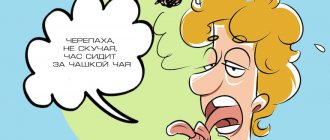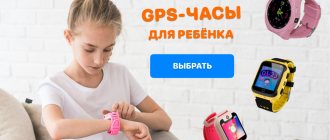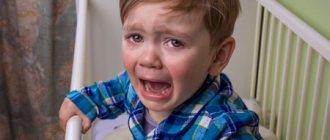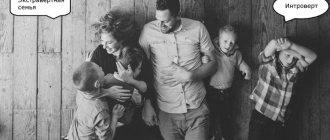If a child writes poorly - rearranges or skips letters, makes “stupid” mistakes in well-known words - primary school teachers usually advise “study more”, they say, over time quantity will turn into quality. But neuropsychologists believe that simple rewriting does little to develop the frontal lobes of the brain - this is precisely why writing suffers. And they offer their own tasks that will help you write correctly and accurately.
WHAT ARE THIS EXERCISES?
Neuropsychology is a relatively young field that combines knowledge of psychology, neuroscience and psychophysiology. The subject of neuropsychology is the study of connections between the functioning of the brain and ongoing mental processes. We mainly study processes that occur with disturbances due to diseases or injuries.
Accordingly, neuropsychological gymnastics are special sets of exercises that help correct certain psychophysiological disorders.
Such complexes are indicated for children with the following problems:
- birth injuries;
- decreased or increased muscle tone;
- frequent illnesses;
- the child did not crawl until he was one year old;
- walked with support on his toes;
- started speaking late;
- has a history of mental retardation, mental retardation, ADHD or similar diagnoses;
- irritable, hot-tempered, conflicted;
- hyperactive (or very slow);
- gets tired quickly, has trouble falling asleep;
- poorly understands the speech of adults addressed to him;
- writes illegibly;
- omits or replaces some letters with others in a letter, or writes them in a mirror image;
- has difficulty mastering school material;
- when reading, he “swallows” endings and thinks out words;
- has difficulty comparing, generalizing, remembering;
- has problems with fine motor skills;
- constantly moves tongue or legs while writing or drawing;
- cannot sit still for 15 minutes;
- absent-minded, inattentive;
- does not finish what he starts;
- distracted, unable to concentrate for long periods of time;
- cannot switch from an incorrect way of performing a given task to the correct one;
- spends a long time doing homework;
- awkward and clumsy.
How are the brain and hand connected?
A third of the area of the motor cortex of the brain belongs to the projection of the hand, which, in turn, is located next to the speech zone. It is these two facts: the size of the projection of the hand and its close proximity to the speech zone that gave scientists reason to believe that the development of the hand leads to the formation and development of speech skills. But how will this fact help you write correctly?
To remember a vocabulary word, we pronounce it syllable by syllable and at the same time beat out the rhythm with the fingers of our right hand on the palm of our left hand. Thanks to the beatable rhythm, there is a feeling that the voice is sounding in the head, and perception, understanding, and memorization are enhanced.
Try pronouncing the word “ice cream” syllable by syllable:
ICE CREAM
Now speak, beating the rhythm. Do you feel the difference? Children are happy to use this technique to memorize and check the spelling of words.
This kind of inconsistency often occurs: the brain works faster than the hand, which leads to mistakes, unwritten words or rearrangements of letters and syllables. For this reason, the handwriting becomes illegible or, conversely, the writing is very slow, although accurate.
It's all about weak interhemispheric connections, low levels of self-control and arbitrariness of movements due to delayed development of the frontal lobes of the cerebral cortex. This feature can be corrected at home. To do this, you can perform the following tasks daily.
HOW CAN THEY HELP A CHILD?
In a general sense, neuropsychological studies with children help develop their ability to voluntarily plan their actions, as well as regulate and control them. They allow you to increase your concentration, distribute it productively, and learn to manage your mental processes.
There are several types of exercises aimed at solving different problems in the development of psychomotor coordination. The main ones are the following:
- Breathing exercises. They help restore normal breathing both at rest and in combination with various movements. This promotes proper oxygen supply to organs and tissues, equalizes muscle tone, and reduces the level of excitability.
- Oculomotor exercises. They allow you to expand visual perception and help reduce synkinesis (reflex movements accompanying the movement of another part of the body or limb).
- Movement exercises and stretches. They stabilize tone, help normalize motor coordination, help regulate autonomic disorders, and master the space of your body and the surrounding space.
- Exercises to develop cognitive skills. Improves the child’s cognitive activity (attention, memory, logic, concentration).
- Articulation exercises. Helps solve pronunciation problems.
Such exercises are effective for both preschoolers and school-age children. At the same time, they are selected taking into account specific problems.
Indications for use
Neuropsychological exercises for children of primary and senior school age are a kind of test that will accurately determine and assess their health status.
During the assessment, the specialist asks the child to complete simple tasks, after which they can accurately tell about the child’s developmental characteristics and capabilities. It will be very useful to know the strengths and weaknesses of the baby in order to work with them correctly in the future.
Neuropsychology will also be effective if the child:
- there are problems with memory, performance and communication with peers;
- there is a delay in speech development, speech therapy disorders;
- there are disturbances in psychomotor development, sleep, and appetite;
- hyperactivity or vice versa inhibition;
- impulsiveness;
- problems with learning, he does not assimilate the proposed material well.
Neuropsychological exercises for children help improve the situation in the following cases:
- speech underdevelopment;
- DPR (delayed mental and psycho-speech development);
- ADHD (attention deficit hyperactivity disorder);
- autism;
- HIA (limited development opportunities);
- minimal brain function;
- underdevelopment of the brain body;
- mental and emotional disorders.
A specially selected complex will help the specialist to consistently activate each area of the brain separately. The program is developed individually, due to which it is possible to eliminate all violations thanks to tactile-kinesthetic exercises.
EXAMPLES OF EXERCISES FOR DIFFERENT AGES
Neuropsychological exercises for children can be used as early as 3–4 years of age, when the child has learned to listen and follow commands.
MOTOR EXERCISES FOR 3-4 YEARS OLD
- Claps. When an adult claps, the child begins to move (walk, run, jump). At the next clap, it should freeze. Hearing the clap again, resume movement, etc. The game ends when the adult starts counting to 10. At the count of 10, the baby needs to calm down, walk quietly and sit down.
- Snake. An adult arranges several chairs in the form of a tunnel. The child needs to crawl under chairs (on his stomach or on his back).
- Freeze and die. The baby moves to cheerful music until he hears the command “freeze.” He must fulfill it. At the command “die” the movement resumes.
- Path. The child needs to move along the cord lying on the floor, placing his feet tightly together (heel to toe), trying to maintain balance.
Breathing exercises:
- What does a flower smell like? An adult places an image or toy in the form of a flower in front of a child sitting on a chair, inviting him to smell it: take a slow, deep breath through the nose (with his mouth closed) and exhale noisily through his open mouth. Repeat up to 5 times.
- Candle. The child slowly inhales through his nose and exhales smoothly through slightly parted lips, directing a stream of air towards the candle flame so that it deflects. As the exercise is mastered, the candle is moved further, explaining to the baby that his tummy will tense up more.
EXERCISES FOR 4 – 5 YEARS OLD
- River and shore.
The exercise is useful for children with difficulties switching between actions. You will need a border on the floor (rope or line). On one side of the border there is a river, on the other there is a coast. On the command “river” the baby needs to jump into the “river”, on the command “bank” - onto the “bank”. After some time, when the child gets used to automatically jumping back and forth, the commands become inconsistent (for example, “river” several times and “bank” once, and vice versa). If the baby is constantly confused, he is asked to first say what needs to be done, and only then perform the desired action. This helps to cope with excessive impulsiveness and switch.
A more complex version of the game is when the leader pronounces one command, and sometimes he himself “makes a mistake” and carries out another. Or, on the contrary: he jumps in the right direction, but gives the wrong command. A child cannot make mistakes. He must trust not his eyes, but his ears (or vice versa). It's complicated. Speaking out the actions will also help here. You can play for about 5 minutes.
If a child gets tired of monotonous movements over time, they can be replaced. For example, sit down and stand up, depicting grass and pine trees.
- Dutee-ball.
Two players stand at the edges of the table. A ping pong ball is placed on the table. The players’ task is to “blow out” the ball into the opponent’s goal. In this case, you need to blow at the same time.
EXERCISES FOR 5–7 YEARS OLD
- Robot mom.
This game helps the child improve his planning skills using speech and compare them with the result.
Mom can’t do anything on her own; she is a robot that follows the child’s commands. And his task is to be a good guide and give as precise instructions as possible. For example, he should help the mother make a sandwich, explaining step by step what needs to be done and why (at the end, you must ask whether the baby was expecting the result, or whether he gave the wrong command somewhere).
You can help mom walk from one room to another with her eyes closed and take some thing there so as not to touch any object on the way (some can be placed specially). Such a game, among other things, develops spatial concepts (right-left, above-below).
Option with drawing: the child draws on a blank sheet of paper a certain image consisting of simple geometric shapes. Then he needs to describe this drawing in such a way that his mother can repeat it, following this description, without seeing the original.
Option with graphic dictation: on a checkered sheet of paper, the child draws a figure, tracing the contours of the cells (without diagonals). Then he needs to “dictate” the drawing to his mother so that she can repeat it exactly (how many cells down, how much to the left or right to step back or connect).
- Breeze.
The child exhales slowly. At the same time, he must interrupt the flow of air with his finger in order to get the sound of the wind, the whistle of a bird, or the war cry of an Indian.
EXERCISES FOR 6 – 9 YEARS OLD
Exercises for children of primary school age are more complex, due to mental capabilities and educational requirements.
- Guess what.
Allows the child to learn to identify essential features of objects for their generalization, exclusion or logical conclusion.
The child is offered a set of 30–40 cards. An adult makes a guess about one of the objects and invites the player to guess it in 20 attempts (or less) by asking leading questions. They should be such that only “yes” or “no” can be answered. Trying to guess by going through all the images of the cards one by one is impossible.
If it is too difficult for the child at first, you can invite him to put aside cards that do not correspond to the hidden word (for example, to the question “is it red?” If the answer is “no,” you can put all the red ones aside). But over time, you need to come to the original option - do not touch the cards.
The most complex versions of this game are those without relying on cards, that is, on a visual image. For example, a child makes a wish for any object from a certain class (furniture, food, transport, clothing). He must then describe the item in such a way that the other player can understand what he is talking about. Or the adult makes a guess, and the child guesses by asking questions.
EXERCISES FOR ANY AGE
- Track it.
Helps improve visual attention. The baby lies on his back, his head is motionless. An adult moves a bright object in front of his eyes (to the sides, up, down, diagonally, bringing it closer and further away from his face). The task is to follow the object with your eyes without losing focus on it. Done within a minute. If the child wears glasses, they must first be removed. If he is in epi-readiness, the exercise is performed with caution.
- Sound sign.
Develops auditory attention. Completes in about a minute. The child closes his eyes. As soon as he hears the indicated sound, he must give the established sign (point in this direction with his tongue, finger, hand). The main thing is not to open your eyes.
- Ball.
Abdominal breathing is practiced, which enhances gas exchange in the body and creates the effect of a massage of internal organs. Teaches the child self-regulation. The baby is lying on his back. He is shown how to inhale and exhale with his stomach (inhale through the nose, exhale through the mouth). Then he is asked to inhale and exhale until a certain count (first on an equal count, for example, 3 and 3, then inhale, for example, on 3, exhale on 5). Exercise is contraindicated in epi status.
There are many neuropsychological classes: complexes for children of different ages, complexes aimed at correcting certain problems and promoting adaptation to learning. It is impossible to say that such exercises are a miracle pill. Most often they are used in complex correction programs, including work with a psychologist, speech therapist, observation by a neurologist or psychiatrist, and taking certain medications. But if the complex is chosen correctly and classes are held regularly, the effect can be quite noticeable.
Exercises to develop interhemispheric interaction
- We write our name with one hand, and the word “well done” with the other.
- We draw a man with one hand - from circles, with the other - from rectangles.
- We color the picture with both hands. Moreover, we color the right part of the picture with the left hand, and the left part of the picture with the right.
- We trace the outline of the picture with both hands at once.
When to expect an effect
Neuropsychological exercises for children will bring positive results after completing the first course. In total, you should take 2 courses consisting of 24 lessons. The duration of each lesson is half an hour.
Basically, classes are held in micro groups, which include 2 children, or with each child individually, 1 lesson 2 times a week for 3 months. The program is selected individually for each child in accordance with his characteristics and age.
It should be remembered that after the 6th lesson the condition may worsen, but after the 10th lesson improvements will be observed. After the first course, the child is prescribed a neuropsychological examination, and the question of when to take the course again, and whether it is needed at all, is decided.
Neuropsychological exercises will benefit the child if all the specialist’s recommendations are strictly followed.
Timely correction is important for children, thanks to which they not only do not lag behind in development, but they also retain the desire to learn and become more successful in life and school.










